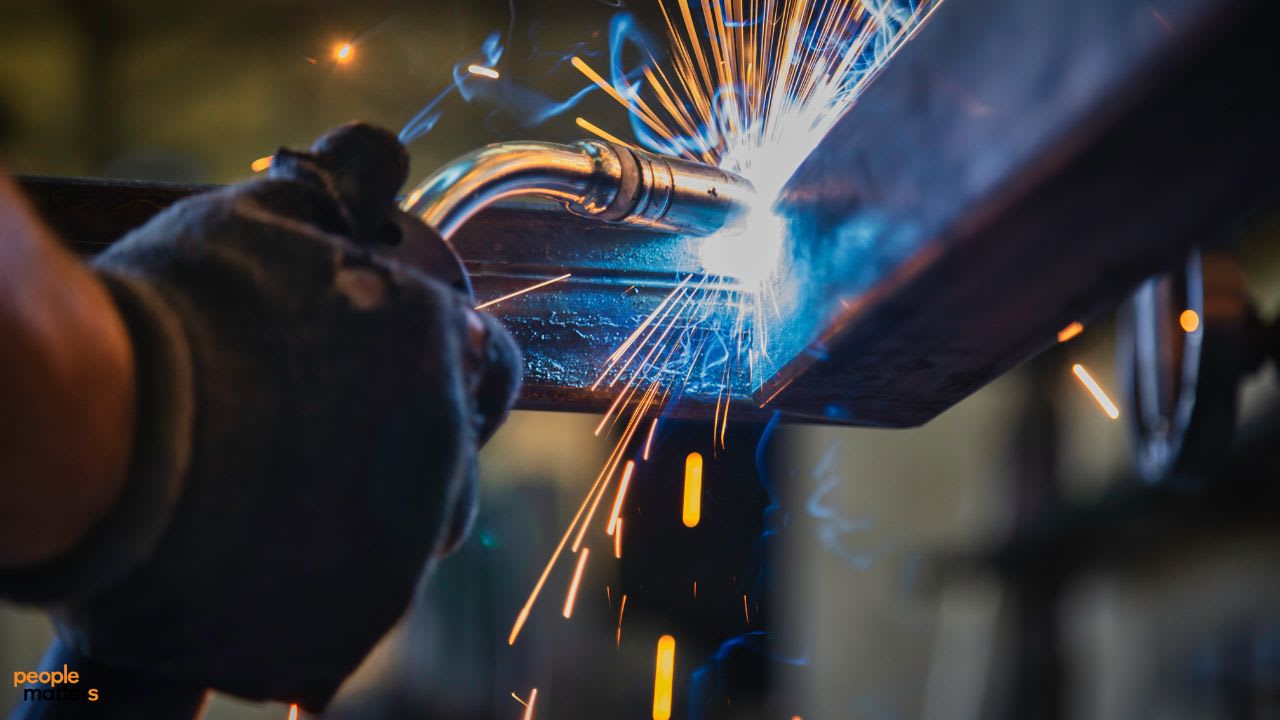Of bots and bricklayers: AI and blue-collar work

For years, the drumbeat of artificial intelligence taking over jobs has largely been heard in white-collar circles. Headlines and statistics, like Forrester’s forecast that AI could replace 2.4 million US jobs by 2030, have fuelled fears of an automated workforce. But amidst the clamour, the fate of blue-collar workers – the very hands that build our cities, keep them running, and provide essential services – has often been overshadowed.
While it's easy to picture office workers replaced by clever algorithms, the reality for blue-collar industries is less about replacement and more about reinvention. Surprisingly, only about 1% of blue-collar roles face the risk of being entirely automated. Instead of sweeping workers off the jobsite, AI offers an opportunity to become a partner in progress, boosting efficiency, safety, and productivity – a symbiotic relationship between human grit and machine precision.
Rebuilding with robots: AI in construction
The construction industry stands at the edge of an AI-driven transformation, with the sector forecast to skyrocket from US$2.57 billion in 2022 to a towering US$15.16 billion by 2032. Here, AI isn't just a tool but a foreman of the future. By automating routine tasks like surveying land, monitoring worksites, and identifying potential hazards, AI accelerates project timelines and adds an extra layer of safety – keeping workers out of harm’s way.
Far from rendering workers obsolete, AI enhances their roles. Instead of hauling bricks or crawling into dangerous spaces, skilled professionals can channel their expertise into intricate work like plumbing, HVAC, and electrical systems. It's a handshake between man and machine, where human craftsmanship meets AI efficiency, transforming job sites without sidelining human talent.
Driving change: AI and transportation
In the world of wheels and warehouses, AI is rewriting the rulebook. From self-driving trucks inching toward reality to advanced driver-assistance systems already in action, AI is paving the way for safer and smarter roads. Every year, around 43,000 road fatalities plague the US, but AI’s predictive prowess is helping chip away at that grim figure.
Take fatigue-monitoring systems, for example. These digital co-pilots detect when drivers are nodding off and nudge them to take a break, while route-optimisation software ensures deliveries run like clockwork. Fully autonomous vehicles might still be stuck in the slow lane, but AI is already revolutionising logistics and safety without leaving human drivers in the dust.
Also Read: 5 AI skills to future-proof your workforce
Home services: Where tech meets tradition
The home services sector, covering electricians, plumbers, and other skilled trades, is also undergoing a quiet revolution. With AI-powered diagnostic tools and augmented reality (AR), professionals are wielding cutting-edge technology like an extension of their toolbox. Imagine a plumber diagnosing a hidden leak using AR overlays or an electrician pinpointing faults in a circuit with AI assistance – jobs completed faster, safer, and with surgical precision.
But make no mistake, this is not about handing tools over to machines. Automation here is less a competitor and more an assistant, elevating the accuracy and efficiency of skilled professionals. For blue-collar workers, the message is clear: embrace the tech, hone your craft, and stay ahead.
Beauty and the Bot
Even the beauty industry isn’t immune to AI’s makeover magic. From virtual makeup trials to personalised skincare recommendations, AI is transforming how beauty professionals deliver services. Yet, it doesn’t replace the artistry of the stylist or the intuition of the skincare expert. Instead, it amplifies their capabilities, allowing them to tailor services more precisely and delight customers in new ways.
Imagine a stylist using AI to suggest the perfect hair colour based on a client’s complexion or a beautician leveraging AI insights for skincare regimens. Here, AI becomes a mirror that reflects deeper possibilities rather than replacing the human touch.
Also Read: The challenges of hiring AI talent
Overcoming the hurdles
Of course, no revolution comes without its share of roadblocks. Implementing AI demands hefty investments, workflow re-engineering, and a cultural shift. Workers may also feel uneasy about job security, despite the low risk of widespread automation.
The onus lies on industry leaders to smooth the transition. Investing in upskilling programmes, addressing concerns like data privacy, and fostering a collaborative culture will ensure AI becomes a tool for empowerment rather than a source of fear.
AI isn’t here to steal the show – it’s here to share the stage. From construction sites and delivery routes to repair shops and beauty salons, blue-collar industries are embracing AI as an ally. This partnership is a blueprint for a future where human ingenuity and machine precision work in harmony.
6 strategies to make AI your ally
1) Upskill and reskill
Arm yourself with AI know-how, from troubleshooting to data analysis.
2) Embrace collaboration
Work with AI as a teammate, not a rival, focusing on tasks that demand human creativity and dexterity.
3) Focus on complexity
Master tasks that require problem-solving and craftsmanship, areas where AI lags.
4) Prioritise safety
Leverage AI's ability to monitor risks and prevent accidents.
5) Seek new roles
Explore emerging roles in AI maintenance and system management to future-proof your career.
6) Commit to lifelong learning
Stay curious and adaptable as technologies evolve.
Workers who are embracing these strategies can ride the AI wave rather than be swept away by it. Blue-collar jobs will remain not just relevant, but indispensable in the AI era.


